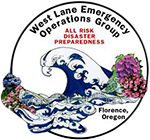Hypothermia
Prepared by Phyllis Mauldin & others
 This is part one of a series on how to prepare your home to shelter-in-place. The federal government strongly urges us take care of ourselves for a minimum of one month.
This is part one of a series on how to prepare your home to shelter-in-place. The federal government strongly urges us take care of ourselves for a minimum of one month.
What I hope to give you is the means of acquiring the ability to take care of yourself and your family for a time. This is a process that will take some time; you are not expected to do this over night or even a month or possibly a year. It will take time to plan, check your current resources and start the process. You can do it and you will be successful. There are a number of plans and a number of resources here locally and online to get more information and help.
So we will begin, understand I also, must follow a plan. Fortunately, for me, I have already started and I have a mentor. My mentor will be helping us with suggestions, information and helpful resources.
No matter how many are involved, whether it is one person, a family, persons with disabilities or pets there is a plan. What I will do is to give you a generic plan then it is up to you to adjust the plan to fit your particular needs. Not everyone will eat the same things. Some people have special diets (children, diabetics, blood pressure, cholesterol), others are vegetarians, and others will eat whatever is put in front of them. You should get the things that you are comfortable with. Remember to include snacks, as these are very essential to survival. If you went out and bought survival rations and when an event happens you tried those rations and you didn’t like them would you eat them? Probably not. You would go to the nearest shelter and say, “feed me”. Why not just go ahead buy the chili or the soup that you like. What we are going to learn here is how to prepare for sheltering-in-place.
There are many reasons for sheltering-in-place. Things happen either by nature or other circumstances beyond your control such as loss of job, loss of income, loss of home or shelter, health issues (including illness, accidents and more). This will also include pandemics, epidemics, or any other kind of disaster or traumatic event.
Keep your plan flexible and have fun with it. Times change, things change, needs and desire change. The essentials in your plan are: what do you need to store and where will you store your items.
The biggest concern for most people is water and food. We will begin there and add other essential elements as we go along. Remember, what I am giving you is generic you must make your plan your own.
These reference books will be of great value in helping you to decide what types of materials will work for your particular plan. Peggy Layton has written several: Emergency Food Storage & Survival Handbook (ISBN 0-7615-6367-9, Emergency Preparedness Made Easy (ISBN 0-9717-6963-X) and Food Storage 101 where do I begin? (ISBN 1-8935-1900-7). Our local booksellers can order these.
Congratulations on taking the first step in the process.
